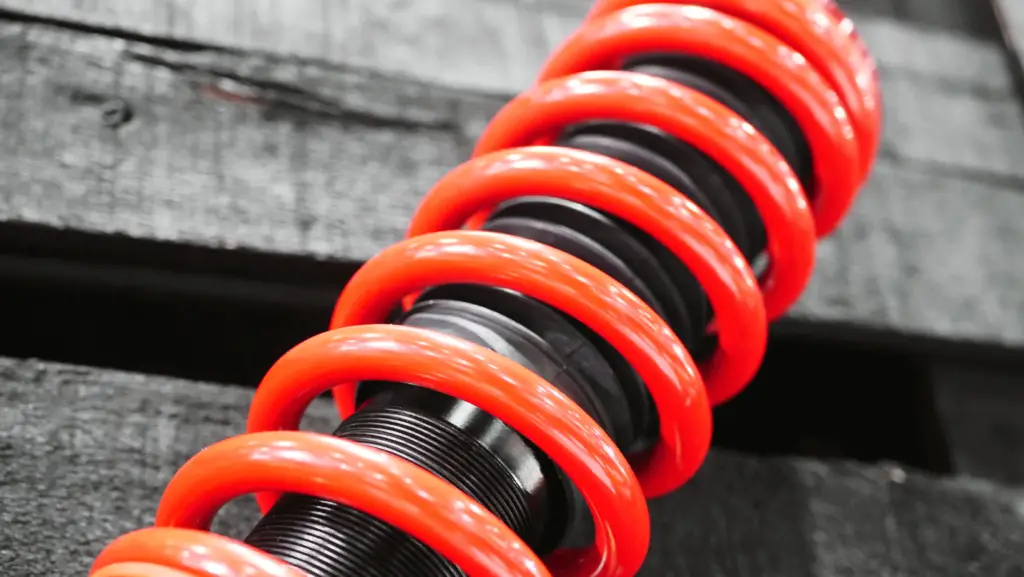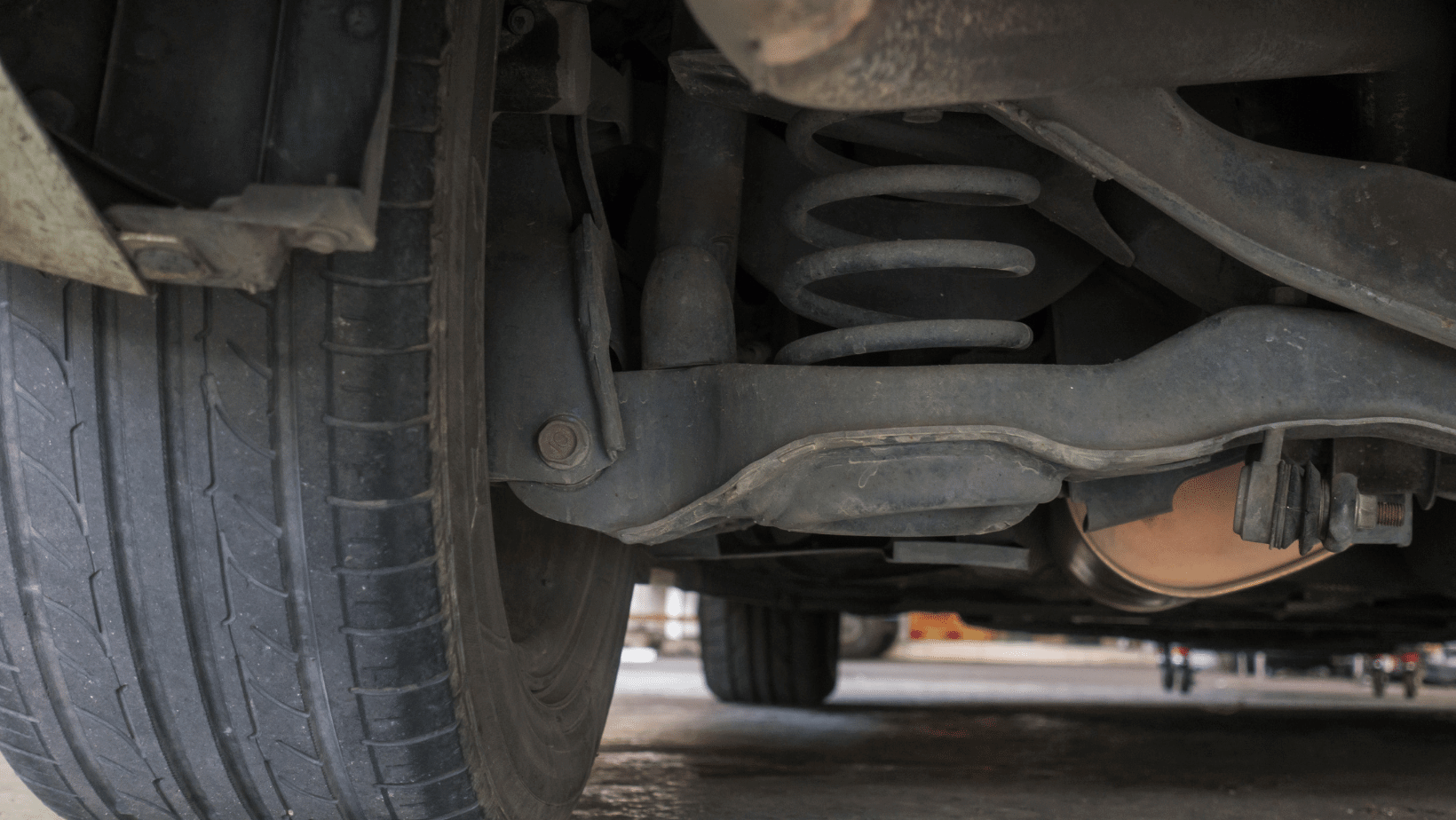Springs are an important part of your car’s suspension system.
The automobile industry uses a lot of different types of suspension springs in a car and each type brings a unique set of advantages and disadvantages to the table.
The following text will take a look at the different types of springs you’ll find in an automobile.
What are Suspension Springs and Why are They Important?
In the simplest terms, suspension springs are the connecting part of the wheel and your car’s body.
The main job of this spring is to absorb the maximum impact of the uneven road surface and ensure that you get a comfortable ride experience.
Naturally, the vibrations and forces generated by uneven road surfaces are destructive for any car.
So, ride comfort is not the only element that your suspension springs affect.
By absorbing the impact of uneven road surfaces, these springs ensure that other components of the vehicle remain in the best condition.
What are the Main Types of Suspension Springs?
Generally, you’ll find the following types of springs in any car’s suspension system:
- Leaf springs
- Coil spring
- Torsion spring
- Airbags
- Rubber spring
- Cylindrical suspension springs
- Inconstant wire suspension springs
- Mini-block springs
- Banana-shaped side load springs
Some of the aforementioned springs have further subtypes that each have specific qualities to ensure excellent performance according to the requirements of your car.
Let’s take a brief look at the qualities of each spring type
Leaf springs
The leaf spring is a simple component that uses the natural elasticity of metal strips to store potential energy and act as a spring.
The concept, execution, and design of these springs are extremely simple where a number of steel plates are stacked on each other starting from the center.
All these plates, called leaves, are clamped on the center which ensures that the potential energy remains in the center because of a bolt in the middle.
The leaf spring has several subtypes depending on the kind of shape they make. Here are the 6 types of leaf springs you’ll come across in automobile applications.
- Semi-elliptical spring: Often found in semi-trucks and loading vehicles. You’ll find these suspension springs in the rear axle of some older cars as well. Overall, they perform the job but leave a lot to be desired when it comes to ensuring effectiveness and ride comfort.
- Quarter-elliptical spring: A very common feature in older cars. The quarter spring is attached from one side and gives better maneuvering than its semi-elliptical counterpart.
- Three-quarter elliptical spring: This is another common feature in older cars that did not allow you to exceed certain speeds. The maneuvering in these springs is very limited and gives you a very tight breathing room in terms of control.
- Transverse spring: This is exactly the same as a semi-elliptical spring but has two integral differences. Firstly, it’s inverted and secondly, it’s connected to the chassis. This allows the spring to sustain more weight than the regular semi-elliptical springs.
- Full elliptical spring: To facilitate maneuvering, the full elliptical springs come with two semi-elliptical ones joined together. However, this quality does not allow the cars to maintain correct axle alignment.
- Platform type spring: These springs consist of a couple of semi-elliptical springs that are fitted with the chassis and the frame together. This divides the overall weight of the vehicle into different points, which allows you to sustain more weight and offer a high level of control.
Coil spring
Coil springs come with an independent suspension system that is made up of a stainless steel frame.
These springs are an excellent choice for confined spaces and come with the capability to store twice the force when compared with springs of the same size.
Torsion spring
As their name suggests, torsion springs come with a rod connected on two ends where it’s acting under shear stress.
In these springs, one end of the rod is connected to the frame and the other end is connected to the wheel. On uneven roads, the rod vibrates up and down which acts under torsion from the spring.
Airbags
Air suspension is a novel concept, which is available in new and expensive cars.
In this case, the hydraulic suspension and hydrogen gas suspension are the most common types which you’ll find in imported vehicles.
Rubber spring
This type of spring focuses on dampening vibrations.
The rubber also has the capability to endure more damage before failing, and that too will happen gradually.
This means that you’ll have more time to go for the repairs before your springs cause any damage to the other components in your vehicle.
Cylindrical suspension springs
This is the same shape that comes into your mind when you think about spring.
You’ll usually find this metal coil wrapped around the shock absorber of your car, which allows it to sustain more damage, effectively absorb vibrations, and quickly come back to its original position.
Inconstant wire suspension springs
This is a single cylindrical spring but the wire itself has a tapered diameter.
This plays an important role in reducing the overall stress concentrations, which can significantly increase the overall comfort level of your ride.
However, the drawback, in this case, would be the loss of durability. This means that you’ll be changing your suspension springs very quickly.
Mini-block springs
Mini-block or barrel springs are designed to stop any direct contact from one end of the winding to the other which gives this spring more flexibility and performance characteristics.
By their looks, they are extremely similar to an inconstant wire spring discussed before. The main difference is the progressive spring rate which gives these springs their signature qualities.
Banana-shaped side load springs
The last type is a banana-shaped load spring which completely redistributes the forces to your wheel’s suspension.
This type of spring gives the most versatile performance and is counted as one of the most durable options out there.
Today, banana-shaped load springs are common in all automobiles as they use a modified version of the MacPherson strut to ensure the performance and durability of the shock absorber in even the toughest conditions.
Key Takeaways

To sum up, the spring is one of the most integral components of any suspension system as it plays a primary role in redistributing the overall forces on your car.
The actual job of your suspension system is to protect the internal components from vibrations and ensure that you are having the most comfortable ride possible on the given road conditions.
With the right spring type, you can get the most out of your car.
Generally, the type of spring is decided by the manufacturer, but knowing about the different options in the market and how they work will help you with modifications and repairs in the long run.
We hope that this text was able to give you a brief introduction regarding the types of automobile suspension springs.
Continue readings to know more about how each type works to give you an overall comfortable experience.


